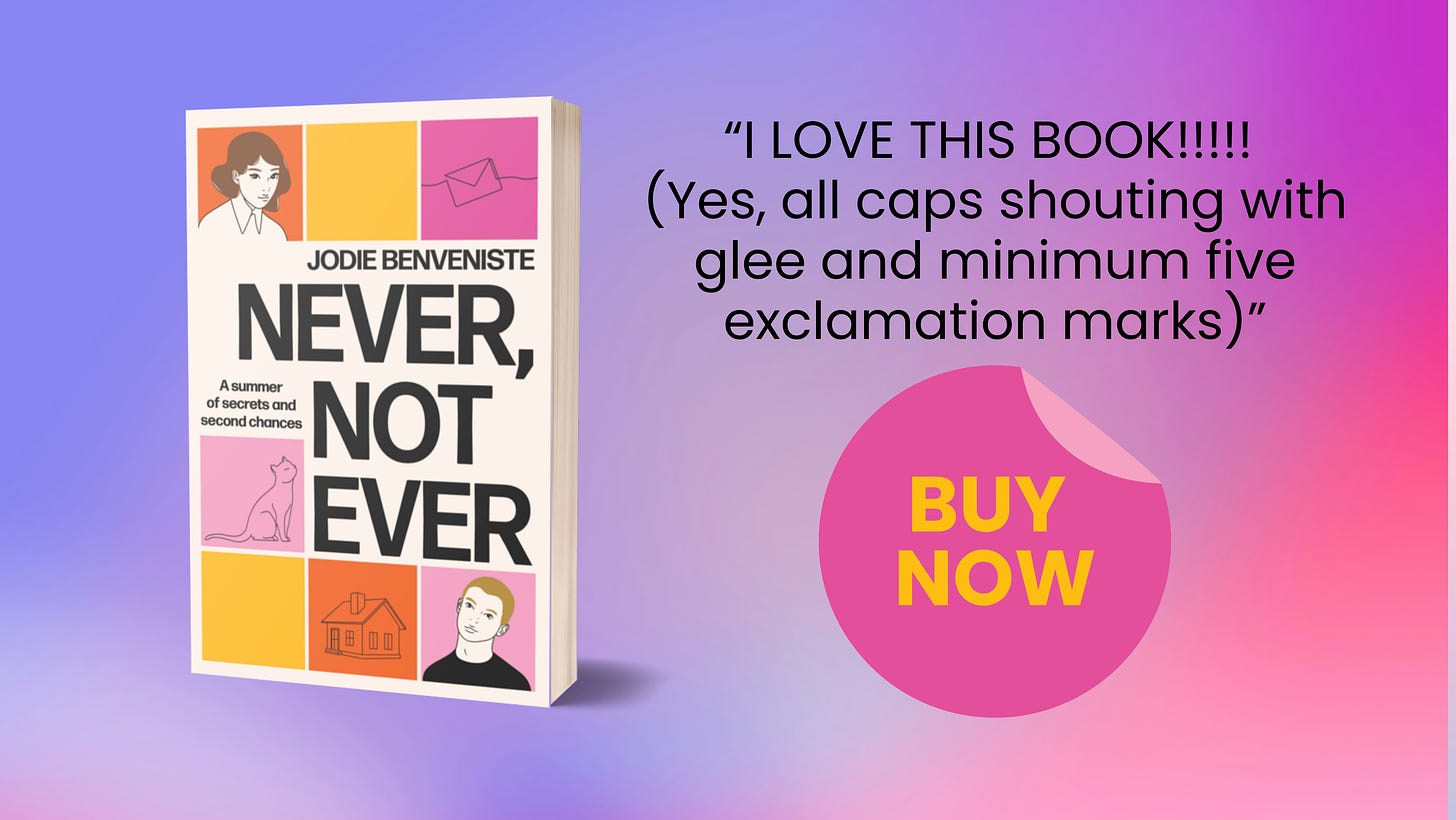3 chapters…
01.
I’ve been reading a young adult novel for younger readers about friendships and social media and self-consciousness. The protagonist is 13 years old and OMG, at certain times I’ve wanted to shake her and have a stern talking to her and also a big sister chat to her about not self-sabotaging and not trying so hard to be that girl’s friend when that girl so clearly does not deserve her friendship, goddammit! As I was reading, I had parts who said, ‘We don’t like this book and we don’t like this main character so maybe this book isn’t very good.’ Aaah, nice try. A deflection. An avoidance tactic. Blame the book when what was clearly happening was this: ‘Oh no! I had a friendship like that when I was younger. I was like that main character. That was like our story!’ Albeit a version without social media. But nonetheless, close to home. Aaah, so this is actually a good book, a really good book. And now we get to help my inner 12 year old to heal from that experience.
02.
I’ve had some wonderful and interesting reader responses to the characters in my book too. Tilly’s mum has been a focus. ‘OMG, I wanted to shake that woman and tell her to notice her daughter, see what she needs, be a decent mum, already!’ Yes, I understood that response. But equally interesting, was the feedback from another reader. ‘OMG, I wanted to shake Tilly and tell her to stop complaining. Her mum was doing the best she could. Give her a break, already!’ Wow, just wow. Two readers reading the same book but having a very different experience. But of course, they are. Because we don’t read what’s on the page, we read what’s within us. Or more accurately, we read what’s on the page via the filter of what’s within us. That’s as it should be.
03.
I remember Elizabeth Gilbert talking about a reader event where a woman came up to her and said, ‘Oh, I loved your book, Eat, Pray, Love. Especially the part where so and so happened.’ Elizabeth thanked her, signed her book and then looked away bemused because that part where so and so happened was not in the book. Well, Gilbert never wrote it anyway. It’s not that the woman had mistaken Gilbert’s book for another. No, it’s that, as a reader, she’d written in her own version of Elizabeth’s book. She’d read what was on the page through the filter of what was within her. That’s as it should be. And that’s how books can be healing. They ping our inner parts, we notice them, they feel acknowledged, and we come into a different relationship with our past and ourselves. Beautiful healing, right there.
3 endnotes…
The podcast Freakonomics is a favourite in our household, and the two-part series on the Broadway hit, Stereophonic, is great listening. In How To Make The Coolest Show On Broadway, they discuss how the most Tony-nominated play in history was created, and in You Can Make a Killing, But Not A Living, they talk Broadway economics. Fascinating!
My book features IFS (Internal Family Systems) - the modality I’ve used for my own healing and for general life living. It’s good for both! And the online IFS mag, PARTS & SELF have published a post I wrote about how I used IFS in my book and my creative process. You can read it here.
Did I tell you that I have a free book club guide for my book? I do! A friend just bought my book and then promptly shared it with her book club and then they all bought it too, and my book is super excited about that. Yay! It gets to hang with a group of book lovers. Nothing better! You can download the free book club guide here.
Until next time,
Love to you and yours!
P.S. Want to buy my book? You can! From my website or Amazon or Apple or Kobo or Google Play or Barnes & Noble or Bookshop.org or order from your local bookstore.






